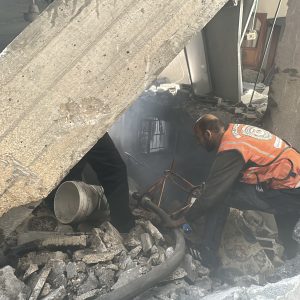Bosnia marks 31st anniversary of siege of Sarajevo
BELGRADE, Serbia (AA) — Residents in Bosnia and Herzegovina’s capital Sarajevo marked on April 5 the 31st anniversary of the city’s nearly four-year siege during the brutal Bosnia War.
Dozens paid their respects and left flowers on the Vrbanja Bridge River, where Suada Dilberovic and Olga Sucic, the first victims of the Bosnian War, were ruthlessly killed for their religious and ethnic identity by Serb snipers on April 5, 1992.
As Serb forces erected barricades all over the Bosnian Muslim city of Sarajevo, the situation deteriorated with the bombing of the city on April 6, triggering the 1,425-day siege.
Thousands of civilians were targeted in countless massacres during the siege that would last until February 29, 1996.
Civilians endured daily bombings and mortar attacks by Bosnian Serb troops for those 1,425 days as shoppers in the market, people waiting in bread lines, and children playing in schoolyards were targeted indiscriminately.
Though 31 years have passed, the people of Sarajevo have not forgotten their suffering and loss throughout the ordeal, and commemoration ceremonies continue to be held for victims in the massacres.
First victims of Sarajevo siege
While the EU accepted the independence of Slovenia and Croatia on January 15, 1992, it stipulated a referendum for the independence for Muslim Bosnia and Herzegovina.
That vote was held in February and March of 1992, with 99.44% of votes in favor of independence and a 64% turnout rate.
After Bosnia and Herzegovina became an independent state, Serb forces began preparing to besiege the city, with snipers staging the first attack on Dilberovic and Sucic on April 5.
Troops also targeted civilians directly in another attack on the same day injuring many taking part in anti-war demonstrations.
The Serbs deployed 13,000 forces along the hills surrounding Sarajevo, equipped with heavy and light weapons.
While the Bosnian State Defense Forces were able to gather an army of 70,000 in the besieged city within 19 months, these troops were poorly equipped and were unable to break the debilitating siege.
The bloodiest massacres took place in the Markale marketplace.
Besides the Markale massacres, thousands of civilians trying to meet their daily needs in the besieged capital also became victims of the attacks, including school children and worshippers.
Average of 329 mortar attacks daily
During the nearly four-year siege, 11,541 civilians, 1,601 of whom were children, were killed, while more than 50,000 were injured, records show.
According to estimates, an average of 329 mortar shells were fired on Sarajevo every day, with more than 500,000 bombs dropped in total.
Historical and cultural artifacts, along with infrastructure, in Sarajevo were also damaged during the prolonged blockade.
The bloody war in Bosnia and Herzegovina ended on November 21, 1995, at Dayton Air Base in the US state of Ohio, with the agreement of the Bosniak, Serb, and Croat sides.
The Dayton Peace Treaty was initialed by the late Alija Izetbegovic, the first president of independent Bosnia and Herzegovina, former Serbian President Slobodan Milosevic, and former Croatian President Franjo Tudjman, at the initiative of US diplomat Richard Holbrooke.
Buildings in Sarajevo still carry the scars of the pogrom, and the places where people lost their lives in the bombardments are known as the “Sarajevo Rose,” and marked with a red sign.









